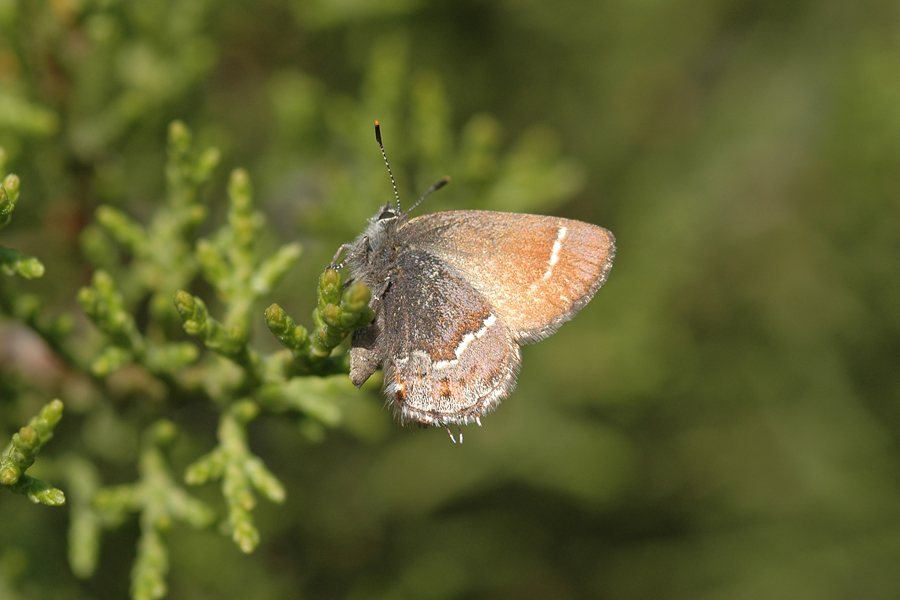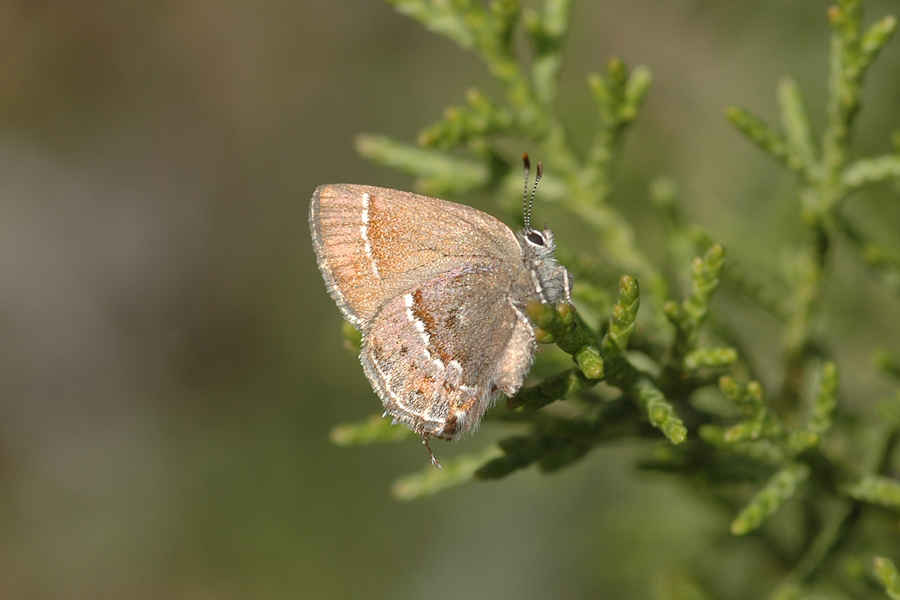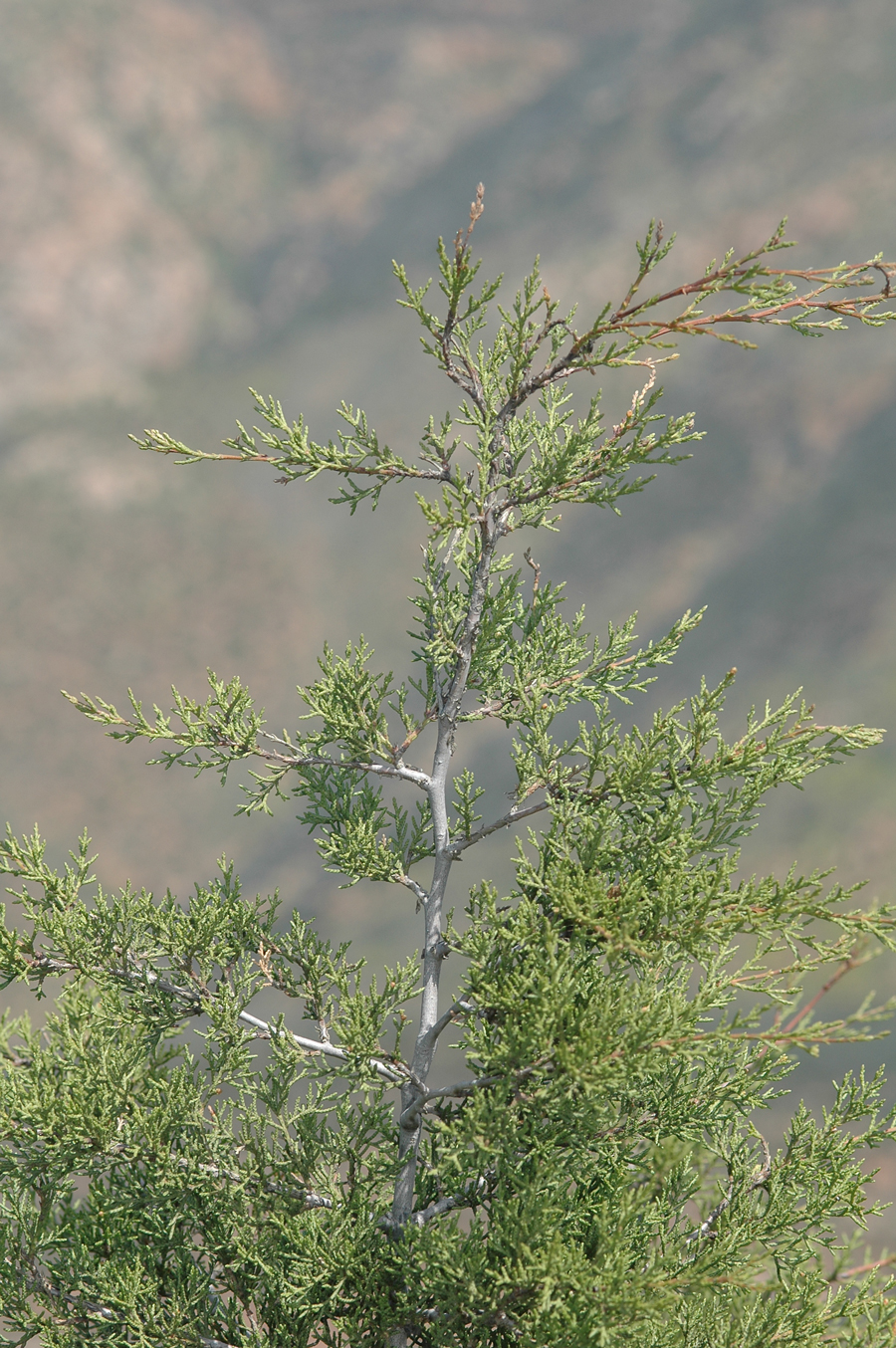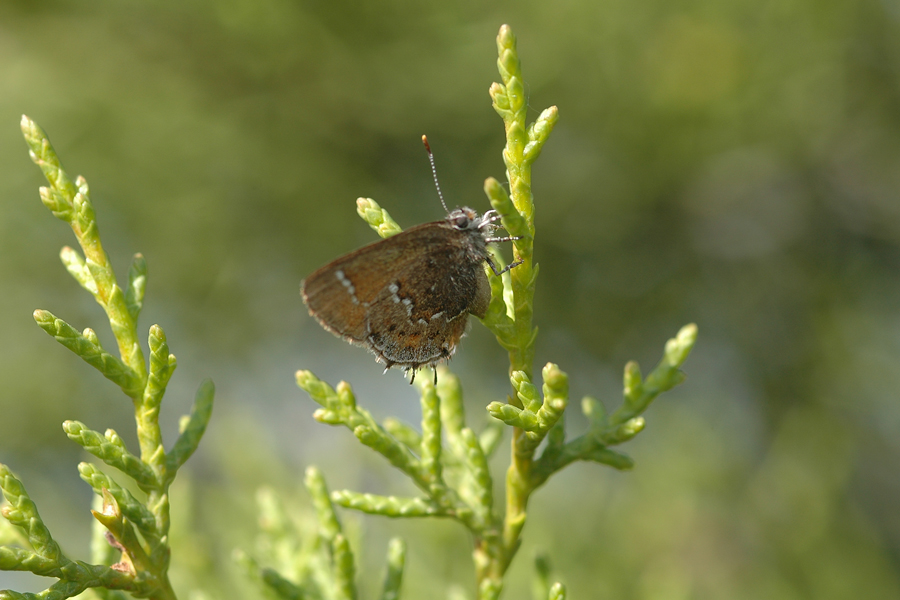Callophrys loki thornei
Thorne's Hairstreak
Callophrys loki thornei is known only from the Otay Mountains Wilderness near the Mexican border, where it flies among stands of its host Tecate Cypress (Cupressus forbesii) - a rare butterfly dependent on an uncommon tree.
Thornei has two broods, the first with adults flying late February through March, and the next in June/July. The early brood emerges from over-wintered pupae. Females oviposit on new growth on mature trees, and larvae emerge a week or two later and bore into young stems during the first instar (later instars feed on the outside of the plant). After 26-35 days developing as larvae, they pupate for 10-15 days in the ground litter at the base of the host. This summer brood then emerges to mate and their offspring overwinter as pupae, and the cycle begins anew. [Source] According to Michael Klein, a biologist who knows this species exceptionally well, wet season forms may have green underneath; dry season forms are more brownish/purple.



